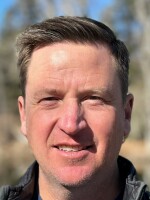Altadena, CALIF – In a grocery store parking lot in the Los Angeles suburb of Altadena, a long line recently snaked behind a food truck where free lunches and donated clothes and household items were being distributed.
Shirley Dosier happened to drive by and gratefully pulled over.
"They're all over the place which is nice because people are just completely lost, with nothing," she said.
Dosier too now has nothing. The home the 79 year-old retiree has owned in Altadena since the 1970s burned down. She was waiting for family to come to help her sift through the ashes. She said she's trying to stay positive.

"I'm 79, it's going to take five or six years before we can even get back up there to make it look right," Dosier said. "I'm just thinking, maybe I'll take the money and run, I don't know."
Whether to take the insurance money and run is something a lot of folks are considering across this vast expensive city since the wildfires that ignited January 7th destroyed an estimated 16,000 structures and killed 29 people.
If recent wildfires in the West are any indication, it will indeed be years before Altadena is rebuilt. The scale of the devastation is huge. And as a long recovery from Altadena to Pacific Palisades is just beginning, a familiar debate has reopened in the disaster recovery world: should we be encouraging rebuilding in places that we know are at high risk for more disasters?
Victim Blaming
For her part, a still traumatized Diana Lieb is frustrated by commentators and social media feeds mostly from outside the city questioning why California continues to sprawl into high risk zones.
Lieb and her husband bought in Altadena nine years ago because it was one of the last affordable places in Los Angeles. Their home that burned down was originally built in 1929. Their daughters' school was also destroyed.
"It's not like we didn't consider climate change factors. This has never happened before," Lieb said. "It's not the kind of neighborhood where you would think, oh, this is so rural, of course there was a fire here. I've been hearing a lot of victim blaming like that."
Before the fires, L.A. County was already moving to restrict development in high risk areas. A long debated plan to ban new home construction in many unincorporated areas in the city's eastern foothills got its final approval just weeks before the Eaton Fire ignited. That new code includes parts of Altadena. But most of the neighborhoods that burned in the Eaton Fire were not even in state designated high risk zones.

Now there's pressure on planners to throw out all the severity maps and start over.
"This is a catastrophe that no one expected or anticipated," said Amy Bodek, director of regional planning for Los Angeles County. "In this case the answer is, we are committed to rebuilding Altadena."
She says the county will make it as easy as possible for fire survivors to rebuild. But there are caveats.
"Anyone whose property burned down absolutely has the right to rebuild," Bodek says. "If they happened to own properties in the hillside, they can rebuild what they had, but not more than that."

This is the tension local leaders face after big fires, like the deadly blazes on Maui in 2023 or after the Camp Fire burned most of Paradise, California in 2018. They don't want to just set people up for another disaster. But on the other hand, there's pressure to help people rebuild and to make it affordable by cutting red tape, or even exempting them from some of the tougher new safety codes.
Individual decisions, individual situations
At UCLA, researcher Edith de Guzman urges caution.
"If the red tape that we're cutting also touches upon shortcuts that have to do with fire readiness and home hardening then we will be doing these communities a great disservice," de Guzman said.
Experts say there is still time for Los Angeles to strike the right balance between making it feasible for fire survivors to rebuild and ensure that newly recovered and rebuilt neighborhoods are as wildfire resilient as possible.
Local planners have been consulting with their counterparts in other California counties hit hard by wildfires, as well as in Boulder County, Colorado, which has won praise for a relatively speedy recovery after the deadly Marshall Fire in December of 2021.
In the end though, Amy Bodek says there's only so much a government can do to shape rebuilding because so much rests on people's decisions about their private property.
"The overall goal should be 100% restoration of a community. But this depends upon individual decisions and individual situations," she said.
This is what Eaton Fire survivors like Diana Lieb are wrestling with. She and her family ended up moving in with her parents in West L.A. They couldn't find anywhere to rent, but she says they're grateful to be somewhere safe. She enrolled her twin daughters in the elementary school she once attended.
Lieb says they'd like to rebuild one day but financially it's not looking great. And that's just one of the considerations.
"There is that emotional component, do we want to rebuild in a place where so much trauma has happened?And what insurance company is going to cover us if we build there?" she asked.
After the 2018 Camp Fire for instance, some decided it wasn't worth all the stress or the expense of rebuilding to safer wildfire codes or dealing with insurance companies. Five years after that deadly disaster, only a third of Paradise had repopulated.
Copyright 2025 NPR



